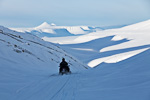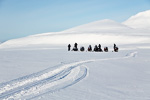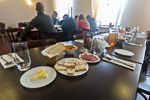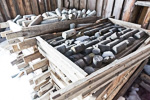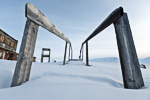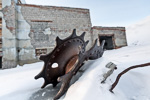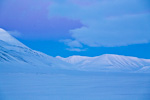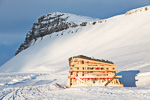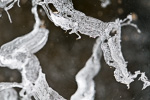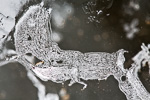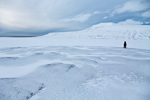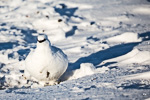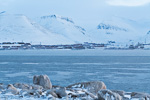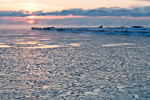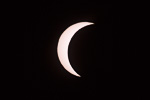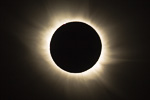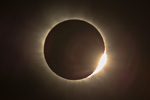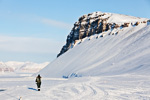-
current
recommendations- Liefdefjord
New page dedicated to one of Spitsbergen's most beautiful fjords. Background information and many photos.
- New Spitsbergen guidebook
The new edition of my Spitsbergen guidebook is out and available now!
- Liefdefjord
New page dedicated to one of Spitsbergen's most beautiful fjords. Background information and many photos.
Page Structure
-
Spitsbergen-News
- Select Month
- June 2025
- May 2025
- April 2025
- March 2025
- February 2025
- January 2025
- December 2024
- November 2024
- October 2024
- September 2024
- August 2024
- July 2024
- June 2024
- May 2024
- April 2024
- March 2024
- February 2024
- January 2024
- December 2023
- November 2023
- October 2023
- September 2023
- August 2023
- July 2023
- June 2023
- May 2023
- April 2023
- March 2023
- February 2023
- January 2023
- December 2022
- November 2022
- October 2022
- September 2022
- August 2022
- July 2022
- June 2022
- May 2022
- April 2022
- March 2022
- February 2022
- January 2022
- December 2021
- November 2021
- October 2021
- September 2021
- August 2021
- July 2021
- June 2021
- May 2021
- April 2021
- March 2021
- February 2021
- January 2021
- December 2020
- November 2020
- October 2020
- September 2020
- August 2020
- July 2020
- June 2020
- May 2020
- April 2020
- March 2020
- February 2020
- January 2020
- December 2019
- November 2019
- October 2019
- September 2019
- August 2019
- July 2019
- June 2019
- May 2019
- April 2019
- March 2019
- February 2019
- January 2019
- December 2018
- November 2018
- October 2018
- September 2018
- August 2018
- July 2018
- June 2018
- May 2018
- April 2018
- March 2018
- February 2018
- January 2018
- December 2017
- November 2017
- October 2017
- September 2017
- August 2017
- July 2017
- June 2017
- May 2017
- April 2017
- March 2017
- February 2017
- January 2017
- December 2016
- November 2016
- October 2016
- September 2016
- August 2016
- July 2016
- June 2016
- May 2016
- April 2016
- March 2016
- February 2016
- January 2016
- December 2015
- November 2015
- October 2015
- September 2015
- August 2015
- July 2015
- June 2015
- May 2015
- April 2015
- March 2015
- February 2015
- January 2015
- December 2014
- November 2014
- October 2014
- September 2014
- August 2014
- July 2014
- June 2014
- May 2014
- April 2014
- March 2014
- February 2014
- January 2014
- December 2013
- November 2013
- October 2013
- September 2013
- August 2013
- July 2013
- June 2013
- May 2013
- April 2013
- March 2013
- February 2013
- January 2013
- December 2012
- November 2012
- October 2012
- September 2012
- August 2012
- July 2012
- June 2012
- May 2012
- April 2012
- March 2012
- February 2012
- January 2012
- December 2011
- November 2011
- October 2011
- September 2011
- August 2011
- May 2011
- April 2011
- March 2011
- February 2011
- January 2011
- December 2010
- November 2010
- September 2010
- August 2010
- July 2010
- June 2010
- May 2010
- April 2010
- March 2010
- February 2010
- November 2009
- October 2009
- August 2009
- July 2009
- June 2009
- May 2009
- April 2009
- March 2009
- February 2009
- January 2009
- December 2008
- November 2008
- October 2008
- August 2008
- July 2008
- June 2008
- May 2008
- April 2008
- March 2008
- February 2008
- April 2000
- Select Month
-
weather information
-
Newsletter

| Guidebook: Spitsbergen-Svalbard |
Home
→ March, 2015
Monthly Archives: March 2015 − News & Stories
Joyous news from the Habitat Restoration Project in South Georgia
Good news from the Habitat Restoration Project in South Georgia in the news section of the antarctic counterpart of this website (click here).
Seabirds near South Georgia: thanks to the Habitat Restoration Project, populations especially of smaller species can be expected to increase significantly in years to come.
Longyearbyen
Mon
30 Mar
2015
The stiff breeze from last night has evolved into a solid storm by now. The weather has been rather instable recently, fluctuating from clear, cold, calm winter days through snow storms to warm air invasions with temperatures even above zero and back, all within a week, more than once. Godt innevær, as the Norwegians say: good inside weather, good to be at home. Which is also nice. And I have to get some work done, some books need to be written (yes, I am still doing that). And when you get a visitor as lovely as this, it can’t be boring anyway 🙂
- gallery anchor link: #gallery_639
Click on thumbnail to open an enlarged version of the specific photo.
Barentsburg, Colesbukta
Sun
29 Mar
2015
The trip to Barentsburg takes about 3 hours. We make use of the fine weather by doing a bit of photo shooting.
The times, they are a changin’ … clearly and visibly also here in Barentsburg, where coal is still being mined, but the past has brought difficulties and accidents in the mines and the future may be somewhere more sunny. Many of the houses have got new fronts, ruins have been removed. There is a new brewery with a restaurant, and new, nice rooms in the hotel. A new hotel and a guesthouse have been announced. Barentsburg is attracting curious visitors in numbers already these days. Not only tourists who come with guided tours, but also locals from Longyearbyen, who appreciate the opportunity of a short holiday over the weekend. Food, rooms and service receive regular praise. The mining company Trust Arktikugol has already been called Turist Arktikugol by the local Norwegian newspaper Svalbardposten …
We are also enjoying lunch in Barentsburg. There is not too much time to look around today. We have a photographic mission together with the group we are traveling with, so we have to stick with their time schedule. Something that we usually don’t have.
But then we are done with that mission and we can spend a long evening in Colesbukta. Weird buildings of a Russian mining settlement abandoned more than half a century ago. To be precise, this was the harbour where the coal was shipped that was mined in Grumantbyen, another abandoned place at the foot of a steep cliff further east, so they could not build a harbour there. Interesting impressions in nice evening light. We stroll around, curiously investigating old buildings, marvelling at old, heavy machinery, geological samples and silent witnesses of daily life that was vibrant here until 1962. Pure photographic pleasure! Glaucous gulls are our company as we enjoy an endless sunset over Isfjord.
- gallery anchor link: #gallery_632
Click on thumbnail to open an enlarged version of the specific photo.
Meanwhile, the wind has started to pick up and it is time for the last leg of today’s trip, back to Longyearbyen. Visibility is quite poor on the pass above the glacier Longyearbreen, a good 700 m high, and although we are only following well-known and frequently travelled routes, we are quite happy to be back in town soon. On the same evening, as we hear later, a young local snow mobile driver receives serious injuries as he drives into a deep wind hole in the snow. It is so bad that, once he is found, he is immediately evacuated to the university hospital in Tromsø with the ambulance place, where the doctors have to put him into artificial coma …
Hiorthfjellet
Sat
28 Mar
2015
There are still sunsets, still are a „normal“ time, namely in the evening. The sunsets are now incredibly quickly moving towards midnight, noticeably later every day, until they join the sunrise to create the midnight sun.
There are just 2 months between polar night and midnight sun. The polar day will change life completely here, animals and people will sleep less, be more active, change their rhythm.
And of course the light will change. For a few weeks, April will still bring blue and red colours during the night, but these will give way to the sun in May, which will then be well above the horizon 24 hours a day.
- gallery anchor link: #gallery_630
Click on thumbnail to open an enlarged version of the specific photo.
And this is why we are here now, in late March, some hundred metres above Hiorthhamn, at one of the most beautiful view points, enjoying the views over Adventfjord and Longyearbyen in the light of an evening sunset. There won’t be many more until September.
Sassendalen
Sat
28 Mar
2015
Sassendalen is one of Spitsbergen’s biggest valleys: 30 km long from Rabotbreen to Tempelfjord and 5 km wide, it is making a strong impression of a very wide landscape when you stand in the middle of it, where a big meltwater river is running in the summer.
But it is especially some of the smaller tributary valleys that have scenic aspects which catch the eye of the observer and the attention of the photographer. The frozen waterfall in Eskerdalen and the canyon-like gorge in Brattlidalen, where you can touch the steep rockwalls on both sides at the same time in some places.
- gallery anchor link: #gallery_628
Click on thumbnail to open an enlarged version of the specific photo.
Fredheim, the famous hut of the legendary hunter Hilmar Nøis, is ready to move. The three old buildings, including the unique main building with two floors, initially built by Hilmar Nøis in 1924 and regularly used by him and his family until 1963, are threatened by coastal erosion and would not have survived the next couple of years in their present position. Now they are standing on heavy structural steel work, stabilized with wooden beams and ready to be pulled up one terrace on to safe terrain (this has been done successfully meanwhile).
De Geerdalen
Fri
27 Mar
2015
Another day in Nordenskiöld Land, a bit further east this time, again traveled few kilometres only, again spent a lot of time trying to discover something new in the landscape and photograph it. One of these photos led to the spontaneous idea of the easter brainteaser, and I thought that this showed very nicely how a material believed to be rather familiar – glacier ice – suddenly reveals something completely new as soon as you take a new, careful approach to look at it, even for someone who has spent a good part of his life near glaciers.
- gallery anchor link: #gallery_626
Click on thumbnail to open an enlarged version of the specific photo.
Photographically, a bit of a challenge. Millimetre work in freezing degrees. I don’t know if the result justifies the effort, but who cares? One thing is sure: the pleasure of doing it was reason good enough for doing it. Seeing something new and trying to figure out how to photograph it. (or not … ☺)
Around Colesdalen
Wed
25 Mar
2015
Landscape in blue and grey in central Nordenskiöld Land, somewhere between Longyearbyen and Barentsburg. Small and large valleys, wide views, new tracks. Few kilometres, many impressions and photos. In our focus – in the truest sense! – the winter light of a cloudy late March day and the snow mobiles in different everyday driving situations. I spent more time in front of the camera rather than behind it, so my own photo collection from this day is not immense.
- gallery anchor link: #gallery_624
Click on thumbnail to open an enlarged version of the specific photo.
Breinosa & Hiorthhamn
Tue
24 Mar
2015
You don’t have to go far away. Light and scenery, great views and some wildlife – it is all here, close to or even within Longyearbyen. No polar bears or walrusses, but those enduring winter dwellers who can’t escape: reindeer and ptarmigan. The latter are well camouflaged also in winter, with their white plumage, so you almost can’t see them in the snow when they put the head down to pick some seeds from the frozen tundra, which is exposed where the snow has been removed by reindeer on their eternal search for food. So great to watch this ever-lasting fight for survival in the arctic without being part of it.
- gallery anchor link: #gallery_620
Click on thumbnail to open an enlarged version of the specific photo.
Hiorthhamn, just opposite Longyearbyen, has one of Spitsbergen’s most impressive bits of historical heritage: the old coal shipping crane from the early 20th century years of mining. Young ice floes are gently scratching the icy shore while the setting sun casts a blood-red light over the mountains on the north side of Isfjord. It is late afternoon, not even evening, but it is just over 2 weeks ago that the first sunrays in Longyearbyen were received with celebration after the polar night. Now the light is coming back quickly.
- gallery anchor link: #gallery_622
Click on thumbnail to open an enlarged version of the specific photo.
Solar eclipse in Spitsbergen: total darkness – total success
The weather Gods were on our side today here in Spitsbergen during the solar eclipse: some thin clouds cleared up during the morning to give an undisturbed view of a brilliantly clear sky. Thousands of visitors and locals went to Adventdalen near Longyearbyen to observe the spectacle, and the tension was rising when the totality approached at 11.12 a.m. local time.
Solar eclipses have been described many times and are, at the same time, indescribable, so I won’t try. I thought that those who said a total solar eclipse was still something completely different than a partial one were exaggerating, but it is completely true, and we are very glad to have seen it. Total darkness and total cold in the fingertips, but it was absolutely worth it. The moment the corona was blossoming … but I didn’t want to describe it. So: photos! Of course I took some photos, something that wasn’t that easy … can we please do it again? 😉
Visitors getting ready for the solar eclipse in Spitsbergen.
The solar eclipse in Adventdalen near Longyearbyen, 20th March 2015: partial phase.
The solar eclipse in Adventdalen near Longyearbyen, 20th March 2015: totality.
The solar eclipse in Adventdalen near Longyearbyen, 20th March 2015: the end of the totality.
The solar eclipse
Fri
20 Mar
2015
The solar eclipse, schduled by astronomy some thousand years ago, if not more, for the late morning of today, Friday 20th of March, 2015, became a huge event for the interested public years ago already. Thousands of eclipse pilgrims from all over the world had brought the little airport near Longyearbyen to the limits of its capacities with numerous scheduled and chartered flights, and the situations in the local hotels was quite similar. The all-important question was obvously the weather. As soon as the first long-term forecasts had emerged from the crystal balls 10 days before, they were carefully scrutinized, and thousands of thumbs were surely kept well crossed over the globe.
As it turned out, the weather Gods were on our side: some thin clouds cleared up during the morning to give way to an undisturbed view of a brilliantly clear sky. Thousands of visitors and locals went to Adventdalen near Longyearbyen to observe the spectacle, and the tension was rising when the totality approached at 11.12 a.m. local time. We went a bit further into Adventdalen, to enjoy the event in silence.
Solar eclipses have been described many times but remain, however, indescribable, so I won’t try. I thought that those who said a total solar eclipse was still something completely different than a partial one were exaggerating, but it is completely true, and we are very glad to have seen it. Total darkness and total cold in the fingertips, but it was absolutely worth it. The moment the corona was blossoming … but I didn’t want to describe it. So: photos! Of course I took some photos, something that wasn’t that easy … can we please do it again?
- gallery anchor link: #gallery_618
Click on thumbnail to open an enlarged version of the specific photo.
It could be felt all over Longyearbyen in the afternoon how the stress and tension of the last days gave way to joy and relieve.
Polar bear shot near Fredheim in Tempelfjord
Today (Thursday, 19th March) early morning around 6 a.m., a polar bear was shot near Fredheim in Tempelfjord after an attack on a camp. A Czech group was camping, the tents were secured with a polar bear alarm fence of the usual system (Norwegian military system with nylon string). The polar bear, said to be a small, presumably young animal, probably crept under the alarm string into the camp without triggering any alarm.
The bear then dragged one man out of a tent, injuring him in his face and arm. Another man shot three times with a rifle at the bear, injuring him, but not killing him. The polar bear then dropped the man and ran away.
Soon, the Sysselmannen (police) was there, found the bear and shot him (or her).
The injured man was brought to hospital. It can be assumed that his injuries are only minor, as the group assumes he can be back with them on Sunday to continue the trip.
The camp is only a few hundred metres from the shore and ice edge. Polar bears are regularly seen in Tempelfjord in spring, most recently just a few days ago. Close to the camp that has been attacked, there are two more, larger camps.
This author happened to be in the same area just a few hours later, initially without knowing about the incident, and talked to the Czech group at their camp.
The camp which was attacked by a polar bear which was later shot near Fredheim in Tempelfjord.
Tempelfjord
Thu
19 Mar
2015
In mid March, the arctic part of this year is beginning for me, and so does the arctic blog. A few weeks have gone since my return from the Antarctic, and some days before the eclipse it is time to move up to Longyearbyen again, to get ready in time, get snow mobiles and ski out again for some warm-up tours. The first ones went to Sassendalen and Tempelfjorden.
- gallery anchor link: #gallery_616
Click on thumbnail to open an enlarged version of the specific photo.
Solar eclipse is coming closer in Spitsbergen
The solar eclipse that will cast darkness over northern Europe for some minutes on Friday is getting closer and excitements are rising. Since the first foggy views of Friday the 20th emerged in the crystal balls of the the first brave long term weather forecasters, speculation about the all-importnat weather is growing and growing. Conclusion: it may or may not work. And of course the 20th of March is analyzed in hindsight, putting statistics covering more than 10 years together. Conclusion: it may or may not work.
Longyearbyen has prepared a lot: lectures explaining the phenomenon are scheduled to prepare the public for the astronomic event, eclipse eye protection is in stock, a brochure has been produced, cultural events organized to keep people busy anyway and a T-Shirt with a printed something resembles a burnt fried egg and the words “Eclipse Svalbard 2015” is available in the shops. In Adventdalen, a short walk from town, a camp is prepared in a location where the sun will be above the mountains on Friday, so guests have a place to warm up a little bit and the opportunity to get some food.
From today (Wednesday), Longyearbyen airport will receive charter and private flights every day, bringing several thousand visitors here until Friday morning, so Longyearbyen will have its first real mass tourist event now, and very likely the last one for a long time (until it applies for the Olympic games or the football world championship, but that is currently not on the agenda). All available hotels are said to have been fully booked since 2007, and many locals have rented their flats out for prices that correspond to the astronomic nature of the event.
Now everybody is curious about the weather on Friday, clouds or clear skies, that will be the all-important factor. Many are secretly hoping for a solar eclipse with northern lights, which is actually possible … and whatever happens, there will be photos of the event on this website.
Solar eclipse with northern lights. A fantasy of the author, made visible with some computer help.
South Georgia: rats, birds and “The Mists of Time”
Die Nebel der Zeit, our German translation of James McQuilken’s book “The Mists of Time”, has helped to clear 2 hectares of South Georgia of rats in 2014 🙂 for more information about the ongoing Habitat Restoration Project of the South Georgia Heritage Trust, click here (antarctic.eu news).
In 2014, the book Die Nebel der Zeit helped to finance the South Georgia Habitat Restoration Project on 2 hectares of South Georgia.

Happy end to long SAR operation
A large SAR (search and rescue) operation was started in the early afternoon of Wednesday, March 12, when 3 men had not returned back to Longyearbyen from their trip to the east coast of Spitsbergen. The private group, all locals from Longyearbyen in their 30ies, left for the east coast with snow mobiles on Monday and should have returned Tuesday evening or later that night. As they did not return to their jobs on Wednesday, their boss alarmed the authorities (Sysselmannen).
Sysselmannen and Red Cross started a SAR operation with 2 helicopters, which lasted the whole afternoon on Wednesday, without any result for many hours. Next to several huts on the east coast which can be used by locals, an immensely large area had to be checked. The group had not informed anyone in Longyearbyen about the exact details of their plans, nor did they have a satellite beacon or satellite telephone which would, very likely, have made the SAR operation much shorter and easier.
In spite of darkness, the emergency forces kept going in the evening and found the 3 men shortly after 11 p.m. on Königsbergbreen. They had given an emergency signal, probably using a torch, and could be transported back to Longyearbyen with some undercooling, but generally in good condition. They were taken to the hospital for medical examination.
Königsbergbreen is a large glacier near the east coast of Spitsbergen, north of Mohnbukta, and part of a frequently travelled route.
The cause for the delay is not yet known in public. Technical difficulties with snow mobiles are certainly possible, including getting stuck in deep, soft snow after periods of snowfall.
In this area, tourists are obliged to inform authorities about their plans well in advance, they have to have insurance for SAR operations and a satellite emergency beacon. Locals do not have this legal obligation.
Königsbergbreen in fine weather.
The position of Königsbergbreen near Mohnbukta on the east coast of Spitsbergen. © base map: Norwegian Polar Institute, cartography by Rolf Stange.
Source: Sysselmannen, Svalbardposten.
News-Listing live generated at 2025/June/15 at 07:00:59 Uhr (GMT+1)






